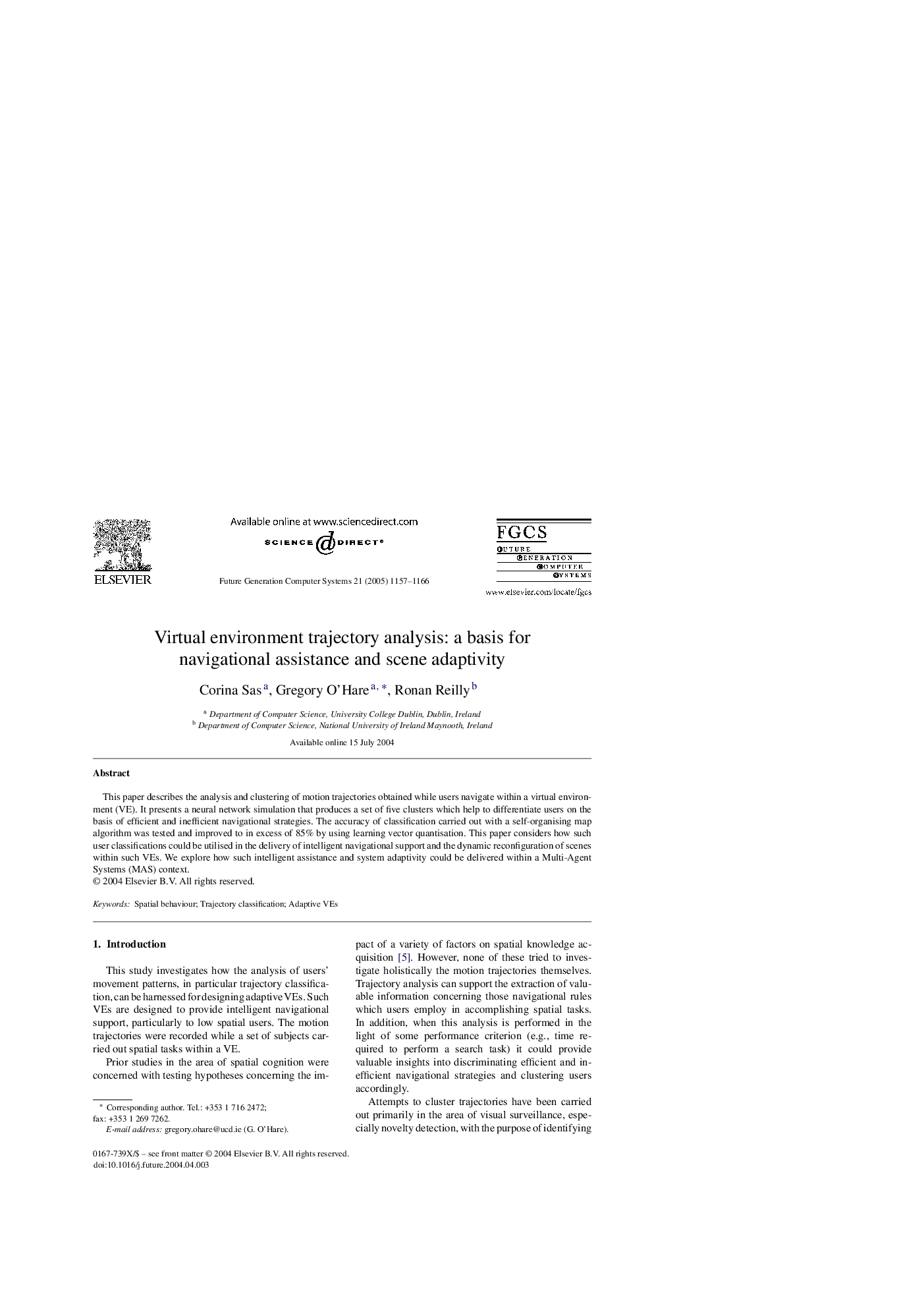| Article ID | Journal | Published Year | Pages | File Type |
|---|---|---|---|---|
| 10330423 | Future Generation Computer Systems | 2005 | 10 Pages |
Abstract
This paper describes the analysis and clustering of motion trajectories obtained while users navigate within a virtual environment (VE). It presents a neural network simulation that produces a set of five clusters which help to differentiate users on the basis of efficient and inefficient navigational strategies. The accuracy of classification carried out with a self-organising map algorithm was tested and improved to in excess of 85% by using learning vector quantisation. This paper considers how such user classifications could be utilised in the delivery of intelligent navigational support and the dynamic reconfiguration of scenes within such VEs. We explore how such intelligent assistance and system adaptivity could be delivered within a Multi-Agent Systems (MAS) context.
Related Topics
Physical Sciences and Engineering
Computer Science
Computational Theory and Mathematics
Authors
Corina Sas, Gregory O'Hare, Ronan Reilly,
